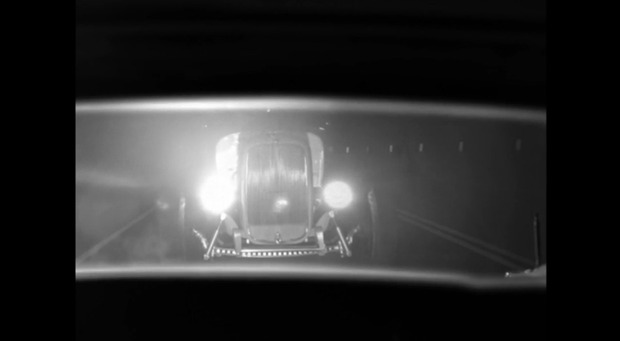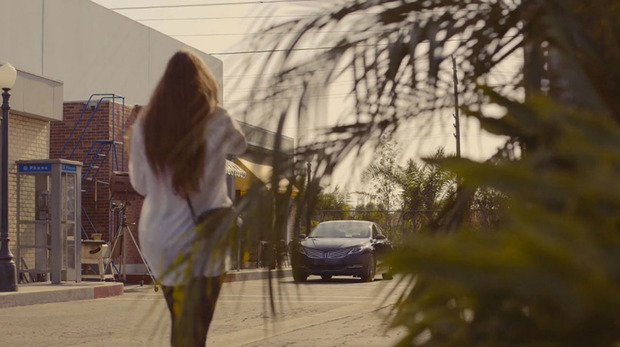The Art of Darkness
A short history of the film noir genre and a modern-day version called “Factory of Dreams”

Sponsored content:
by Chris Diken of Vimeo
In conjunction with Vanity Fair and Film Independent, The Lincoln Motor Company tapped filmmaker Jacob Hatley re-imagine the classic genre of Thriller Noir. The film short “Factory of Dreams,” is a suspenseful story that blurs the lines between fiction and non-fiction.

Film noir is a French term that translates literally to “black film.” And if you watch a noir, you’ll likely see one reason why: there is a lot of inky, mysterious black filling the screen. These shadows and ill-lit areas serve to obscure many things: robberies, murders, affairs, plotlines, and any sense of optimism.
But while many noir films have visual resonances because of their chiaroscuro effects and silhouetted, trenchcoat-wearing men lurking at the sides of the frame, the “noirness” of noir more directly ties to an attitude that might be described as “film grim” — the brutality of existence portrayed in a way that is exceedingly stylish. So while our eyes often first recognize the noir mood, our brain is perhaps more reluctant to process the noir subject matter.

The precursor to film noir was German Expressionism in its various forms, including theater, architecture and painting. These pre-WWII artworks were shaped by the atmosphere of impending conflict and were rife with themes of madness, destruction and psychological breakdown. Many of these subjects were carried over into American noir films when German directors headed to America as the war approached.
As European directors brought their dark visions across the ocean, the literary movement of crime fiction was gaining steam in America. A number of American authors wrote hardboiled detective novels featuring mysteries that needed unraveling and psyches that needed exploring, especially those belonging to damaged, cigarette-puffing men desensitized to the horrors of being.

One characteristic of noir films is that they are wrought in stark black and white, a blatant form of good-evil symbolism that makes the dark side all the more menacing—you can’t see it. And despite the good that is there to combat evil, many noirs ended on a bleak, unredeeming notes, like a prisoner sent to the electric chair. It’s hard to go out for dinner after a movie like that.
Another common noir symbol is the enigmatic object, often juxtaposed with a fake version of said enigmatic object. The object can give tangible form to a mystery or feeling, such as that certain falcon of Maltese extraction, which represents both flight and the inability to fly. Other notable noir characteristics are rain-soaked streets, run-down buildings, neon signs, and flickering lamps, the last two perfect for producing those obfuscating shadows. These symbols can be seen to represent American cynicism and hopelessness during and after the Second World War. The films tell stories of characters trapped in situations they did not create, and fighting against random forces in a world that is essentially corrupt.

The classic era of film noir began as WWII was winding down, and it brought some of the most striking films of any genre, featuring beautiful femme fatales who use their looks to get what they wanted. Many critics regard film noir as more a mood or style than a genre, which accounts for its lasting impact. Several important thrillers from the late ‘50s and early ‘60s have a certain noir-ishness, featuring stripped-down sets, harsh black-and-white lighting and senseless violence.
The ‘60s were awash in noir references, with brainwashings and men hunted for crimes they (probably) did not commit. French New Wave directors threaded noir elements in their work, and the 1980s to present day are filled with neo-noirs. You know those films that feature briefcases or boxes with unknown contents? That’s noir right there.

One might say that that noir has been such a powerful force because it taps into emotions that we all experience from time to time. We share the detective’s disillusionment. We need help, like the femme fatale. We seek symbols of success, and sometimes fake ones. If only it was so easy for us to experience these sinister sensations with such style.
Watch Jacob Hatley’s “Factory of Dreams” at Hello, Again, where there is also more about the filmmaker and a look behind the scenes of “Factory of Dreams.”
Images courtesy of Lincoln Motor Company












